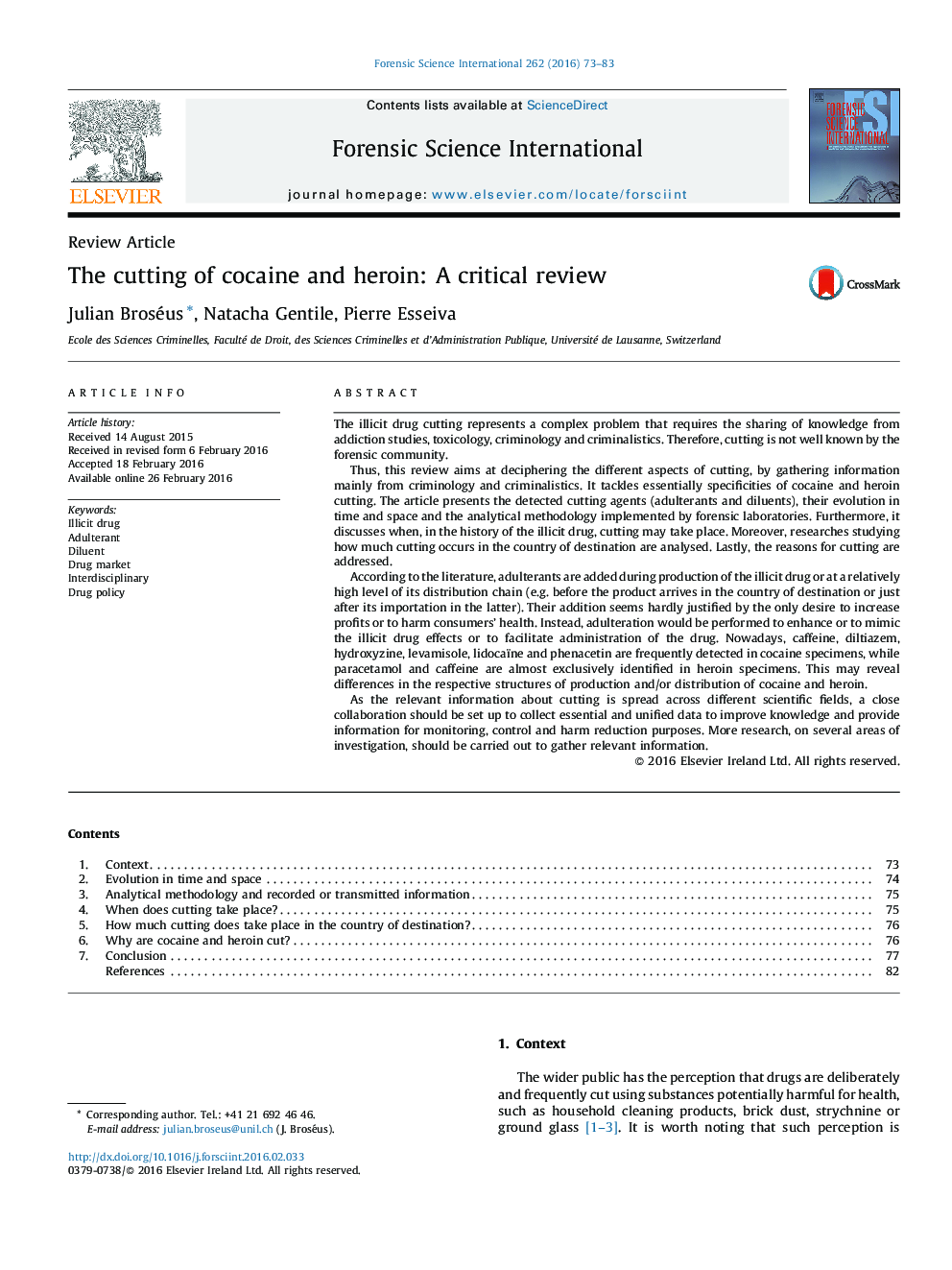| کد مقاله | کد نشریه | سال انتشار | مقاله انگلیسی | نسخه تمام متن |
|---|---|---|---|---|
| 95084 | 160414 | 2016 | 11 صفحه PDF | دانلود رایگان |
• A review of relevant publications of criminology and criminalistics.
• A single article covering the main aspects of illicit drug cutting: who, when, why?
• Empirical information on cocaine and heroin adulteration/dilution.
• Summary of past trends and current cutting approaches.
• Propositions to improve knowledge of cutting phenomenon.
The illicit drug cutting represents a complex problem that requires the sharing of knowledge from addiction studies, toxicology, criminology and criminalistics. Therefore, cutting is not well known by the forensic community.Thus, this review aims at deciphering the different aspects of cutting, by gathering information mainly from criminology and criminalistics. It tackles essentially specificities of cocaine and heroin cutting. The article presents the detected cutting agents (adulterants and diluents), their evolution in time and space and the analytical methodology implemented by forensic laboratories. Furthermore, it discusses when, in the history of the illicit drug, cutting may take place. Moreover, researches studying how much cutting occurs in the country of destination are analysed. Lastly, the reasons for cutting are addressed.According to the literature, adulterants are added during production of the illicit drug or at a relatively high level of its distribution chain (e.g. before the product arrives in the country of destination or just after its importation in the latter). Their addition seems hardly justified by the only desire to increase profits or to harm consumers’ health. Instead, adulteration would be performed to enhance or to mimic the illicit drug effects or to facilitate administration of the drug. Nowadays, caffeine, diltiazem, hydroxyzine, levamisole, lidocaïne and phenacetin are frequently detected in cocaine specimens, while paracetamol and caffeine are almost exclusively identified in heroin specimens. This may reveal differences in the respective structures of production and/or distribution of cocaine and heroin.As the relevant information about cutting is spread across different scientific fields, a close collaboration should be set up to collect essential and unified data to improve knowledge and provide information for monitoring, control and harm reduction purposes. More research, on several areas of investigation, should be carried out to gather relevant information.
Journal: Forensic Science International - Volume 262, May 2016, Pages 73–83
